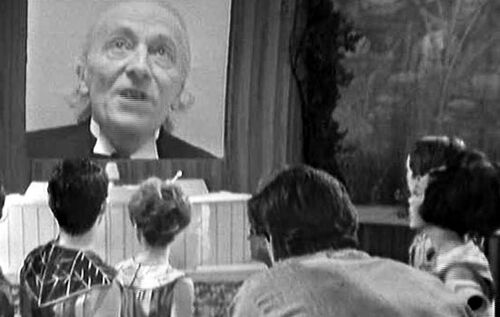Transmat:Doctor Who: Difference between revisions
No edit summary |
No edit summary |
||
| Line 3: | Line 3: | ||
<div class="box-container"> | <div class="box-container"> | ||
<div id="box-container" class="box-cols" style=margin-top:40px> | <div id="box-container" class="box-cols" style=margin-top:40px> | ||
<div class="box | <div class="box two"><h1>Jane Tranter</h1>Jane Tranter was an important advocate for the return of ''[[Doctor WHo]]'' to [[BBC One]] in the early 2000s.</div> | ||
<div class="box two">Two</div> | <div class="box two">Two</div> | ||
<div class="box one">One</div> | <div class="box one">One</div> | ||
Revision as of 05:12, 8 October 2013
Playback was a television production technique in which pre-recorded material was literally played into a scene, rather than being added as a post-production effect. It was universally used in the 1960s as the method by which actors were seen on view screens. As seen in the picture at the left, William Hartnell was pre-recorded separately, then projected live into the scene with the actors in the foreground. Though antiquated, the technique was used even into the 1980s, most notably for the title sequence. The quality of the opening titles for the 1963 version of Doctor Who was never high, because it was never a first-generation copy of the titles. Instead, they were played live into the recording of the first scene of many episodes, causing actors to have to time their first lines to the final notes of the studio-audible Doctor Who theme.

